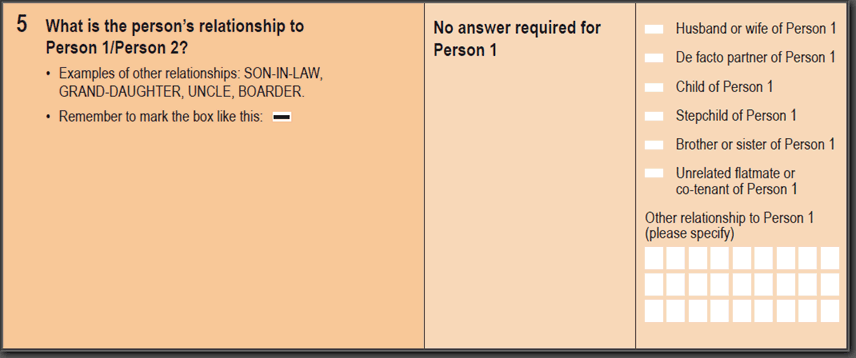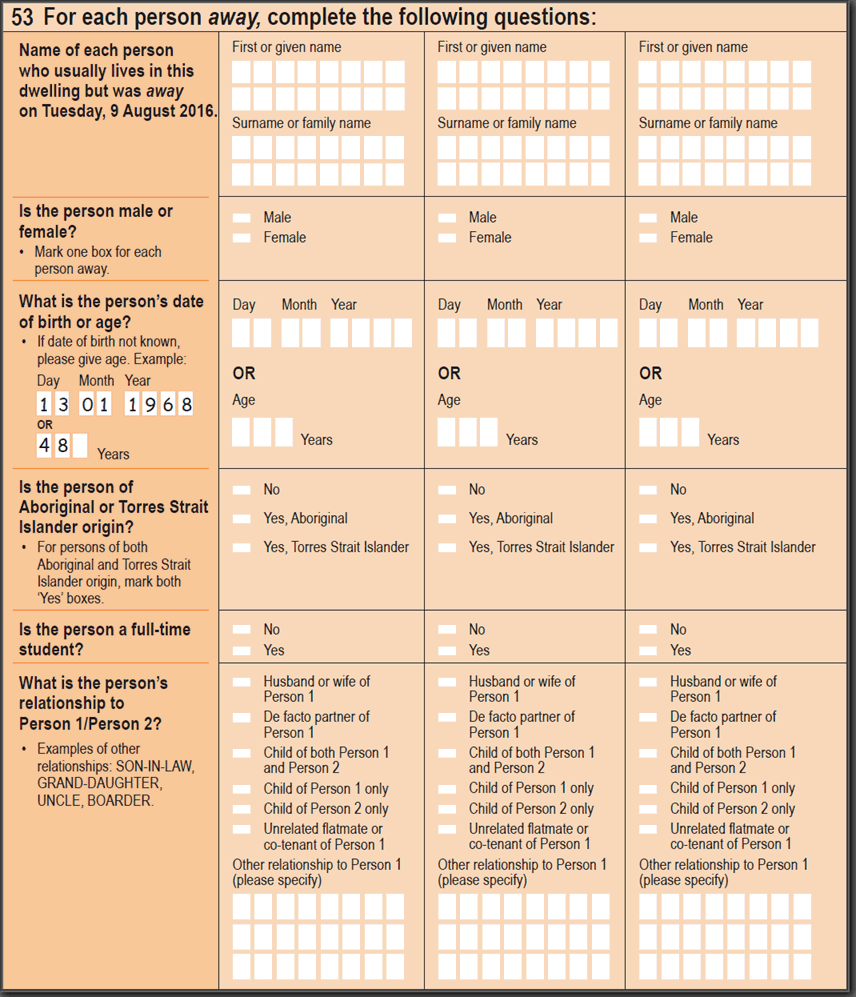Family Composition (FMCF)
Family Composition classifies families into different types. When classifying families into different types, information about temporarily absent family members is used. This variable is applicable to all Families in Family households.
How this variable is created
In the Census, data for families and households is mainly derived from the relationship questions on the Census Household Form, which asks for each person's relationship to 'Person 1'. Images of these questions are provided below. During data processing, families are then identified and created based around a ‘family reference person’. In 93.4% of cases 'Person 1' is the family reference person. For cases where a child or non-family member was listed as 'Person 1', a more appropriate person is selected to be the reference person.
This variable distinguishes between different types of families based on the presence or absence of couple relationships, parent-child relationships, child dependency relationships or other familial relationships, in that order of preference. Families are classified in terms of the relationships that exist between a single family reference person and each other member of that family.
Reporting relationships in respect of 'Person 1' on the form, can make it difficult to establish all the relationships that exist in a household, or to identify whether more than one family is living in the dwelling. In some cases, additional information such as surname, usual residence and marital status are used during data processing to help determine these relationships.
Variable history
This variable was first introduced in the 2006 Census to replace Family Type. No changes were made in 2016.
Non-response rate
Non-response rate only applies to data items that directly reflect responses to individual Census form questions. For more information, refer to Understanding Census data quality. Family Composition does not have a non-response rate as it is a derived value created during Census processing for applicable families.
Data usage notes
For many households, identifying the family structure for a dwelling is quite straightforward. However, across the community, a wide variety of living arrangements exist therefore family structures can be complex and dynamic in nature. The quality of family data in the Census is dependent on people’s ability to describe these relationships within the constraints of the generalised questionnaire format required by a Census.
Further information
Classification information on Family Composition is available in the 2016 Census Dictionary.
For information on family type and family composition, see the data quality statement for Family Composition.
For information on the Relationship in Household question and data item, see the data quality statement for Relationship in Household.
Household form question image
Questions 5 and 53 as they appear on the 2016 Census Household Paper Form:


A text only version of the online Census Household form is available from the Downloads tab.
 Print Page
Print Page
 Print All
Print All